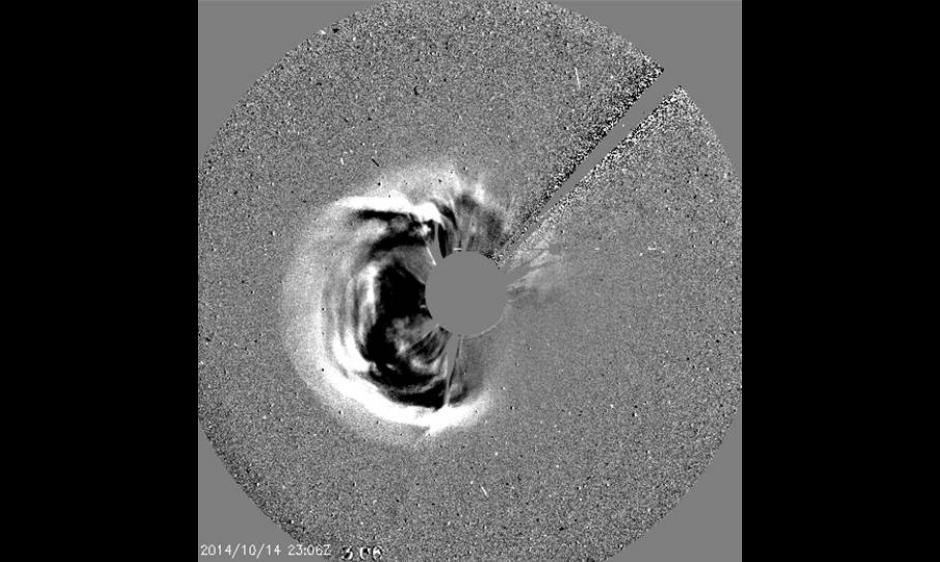
A CME was observed erupting from around the east limb of the Sun in NASA's SOHO/LASCO imagery beginning at 1900 UTC (3:00 pm EDT) on October 14th. The source appears to be a region that will be rotating onto the visible disk within the next few days. R1-Minor radio blackouts were observed in conjunction with this event and remained over the R1 threshold for nearly 5 hours. It is rare for a flare to be observable by the GOES satellite from an area this far around the limb but the magnetic field lines stretched far enough for the instrument to get a line of sight reading. The CME is not expected to affect Earth, however, forecasters will keep an eye out for future activity from the region that produced this event as it comes into view.